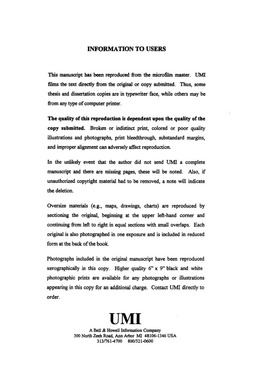| dc.contributor.advisor | Roe, Bruce A., | en_US |
| dc.contributor.author | Crabtree, Judy Sue. | en_US |
| dc.date.accessioned | 2013-08-16T12:29:33Z | |
| dc.date.available | 2013-08-16T12:29:33Z | |
| dc.date.issued | 1997 | en_US |
| dc.identifier.uri | https://hdl.handle.net/11244/5442 | |
| dc.description.abstract | The complete nucleotide sequence of a meningioma deletion region (MDR) from human chromosome 22q11, a segment of the Cat Eye Syndrome (CES) region from human chromosome 22, and portions of the Multiple Endocrine Neoplasia, type 1 (MEN-1) from human chromosome 11 has been determined by sequencing a set of cosmids or BAC genomic clones mapped to these regions. The sequencing strategy entailed isolation of the genomic clones by a diatomaceous earth-based procedure, physical shearing by nebulization, and the subsequent end-repaired, size selected DNA fragments were subcloned into pUC-based vectors. The sequencing templates were isolated from the shotgun subclones using a modified alkaline lysis procedure that was automated on a Beckman Biomek 2000 robotic workstation as part of this research. Each template was incubated in cycle sequencing reactions with either forward or reverse universal sequencing primer, Taq DNA polymerase and dye labeled terminators. After removal of excess terminators and loading onto an ABI 377 DNA sequencer for automated sample electrophoresis, detection, data collection and base calling, the resulting sequence data was edited, assembled and proofread using one of the several editing and assembly programs (TED, XGAP, fakII, cap2, phred/phrap, consed) on a Sun SPARCstation. Each final sequence was analyzed for potential coding regions, repeated elements and database homology using the XGrail and powblast programs. | en_US |
| dc.description.abstract | Additionally, sequence analysis in the CES and MEN-1 regions served as pilot projects for a novel sequencing strategy, sequence scanning. Results presented here demonstrate how this approach is used to localize the majority of coding regions after only the shotgun phase of DNA sequencing. This strategy is particularly useful when searching for a putative, disease-related gene. | en_US |
| dc.description.abstract | Analysis to date reveals several putative genes in the MEN-1 region, including the PYGM locus, a zinc finger motif gene, a GC kinase gene, the gene for DNA polymerase $\alpha$ and four putative genes, including the gene for MEN-1. The MDR region contains the MN-1 gene and the genomic organization of this gene is reported. The entire sequence presented here represents approximately 1% of human chromosome 22. | en_US |
| dc.format.extent | xviii, 275 leaves : | en_US |
| dc.subject | Meningioma. | en_US |
| dc.subject | Human chromosome abnormalities. | en_US |
| dc.subject | Chemistry, Biochemistry. | en_US |
| dc.subject | Nucleotide sequence. | en_US |
| dc.subject | Biology, Molecular. | en_US |
| dc.subject | Biology, Genetics. | en_US |
| dc.title | Sequencing analysis of regions of human chromosomes 11 and 22: Meningioma (22), cat eye syndrome (22), and multiple endocrine neoplasia, type 1 (11). | en_US |
| dc.type | Thesis | en_US |
| dc.thesis.degree | Ph.D. | en_US |
| dc.thesis.degreeDiscipline | Department of Chemistry and Biochemistry | en_US |
| dc.note | Major Professor: Bruce A. Roe. | en_US |
| dc.note | Source: Dissertation Abstracts International, Volume: 58-02, Section: B, page: 0538. | en_US |
| ou.identifier | (UMI)AAI9721062 | en_US |
| ou.group | College of Arts and Sciences::Department of Chemistry and Biochemistry | |
